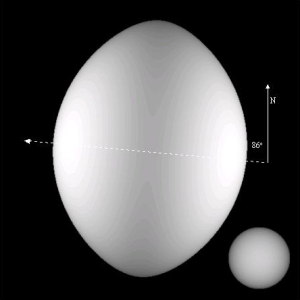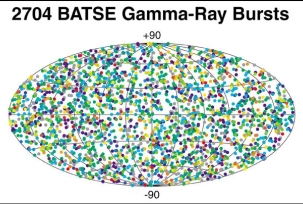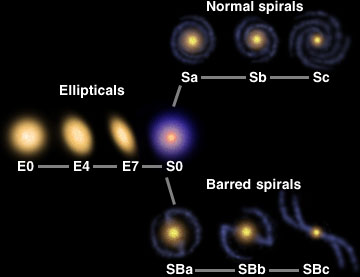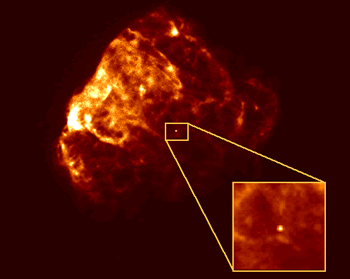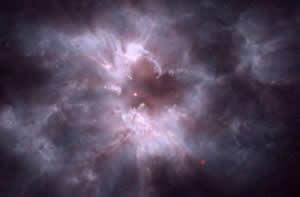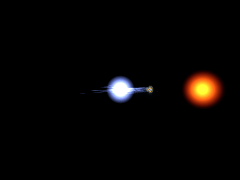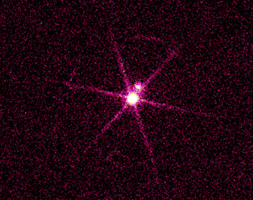A computer model of Regulus, with the Sun shown to scale
Click on image for full size
Wenjin Huang, CHARA, Georgia State University
Click on image for full size
Wenjin Huang, CHARA, Georgia State University
Related links:
Regulus
| What's in a Name: | Latin for "Little King" |
| Claim to Fame: | Rotates so quickly (about 700,000 miles per hour at its equator) that it is shaped like a bullet! |
| Type of Star: | Blue-white Main Sequence Star |
| How Far Away: | 85 light years away |
| How Bright: | About 350 times brighter than the Sun |
| Where to View: | In the constellation Leo the Lion. |
| When to View: | February through June. |
Last modified January 25, 2006 by Travis Metcalfe.


